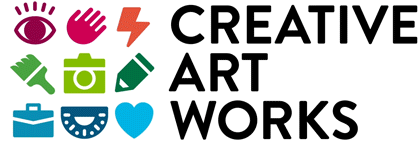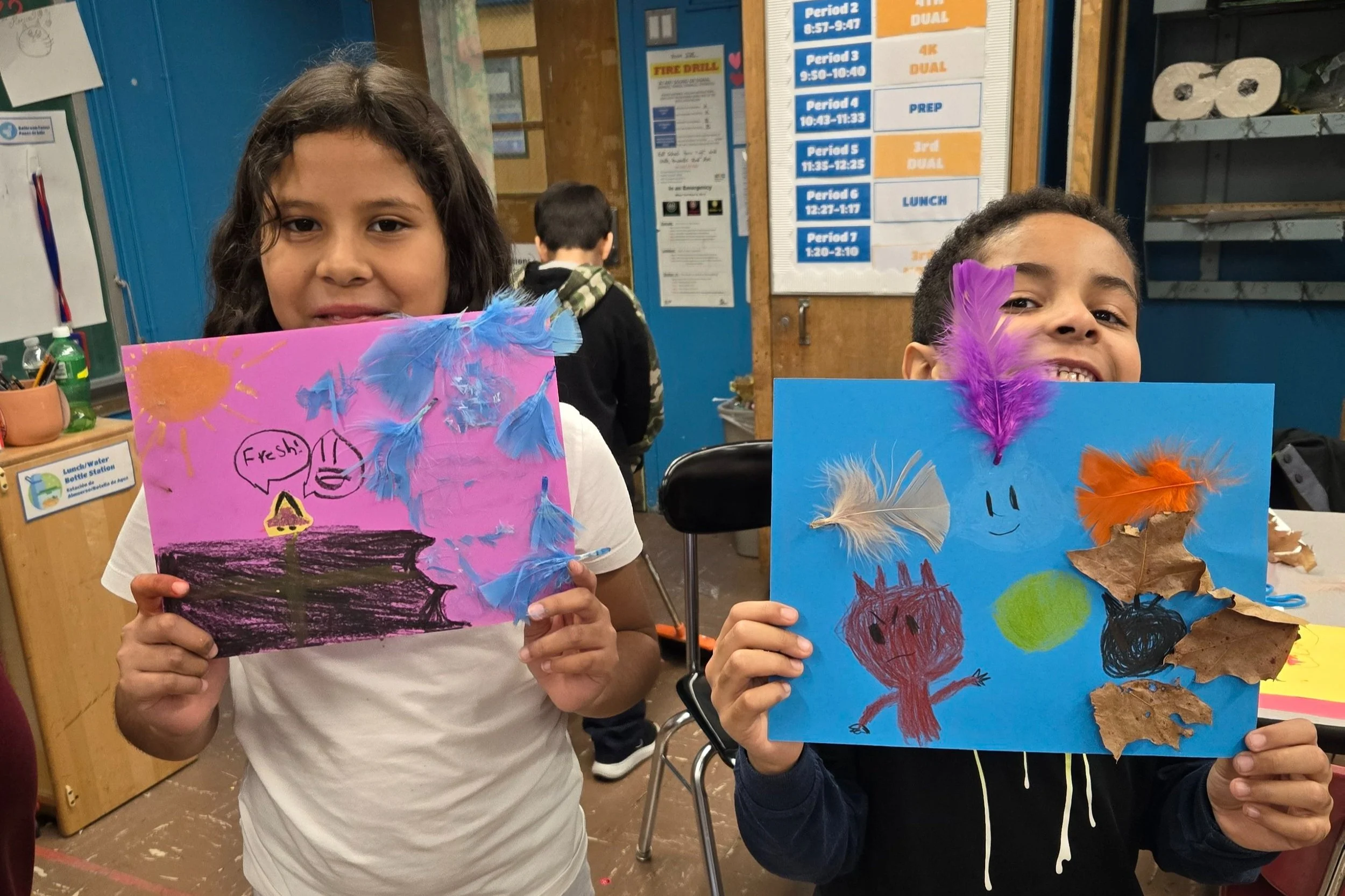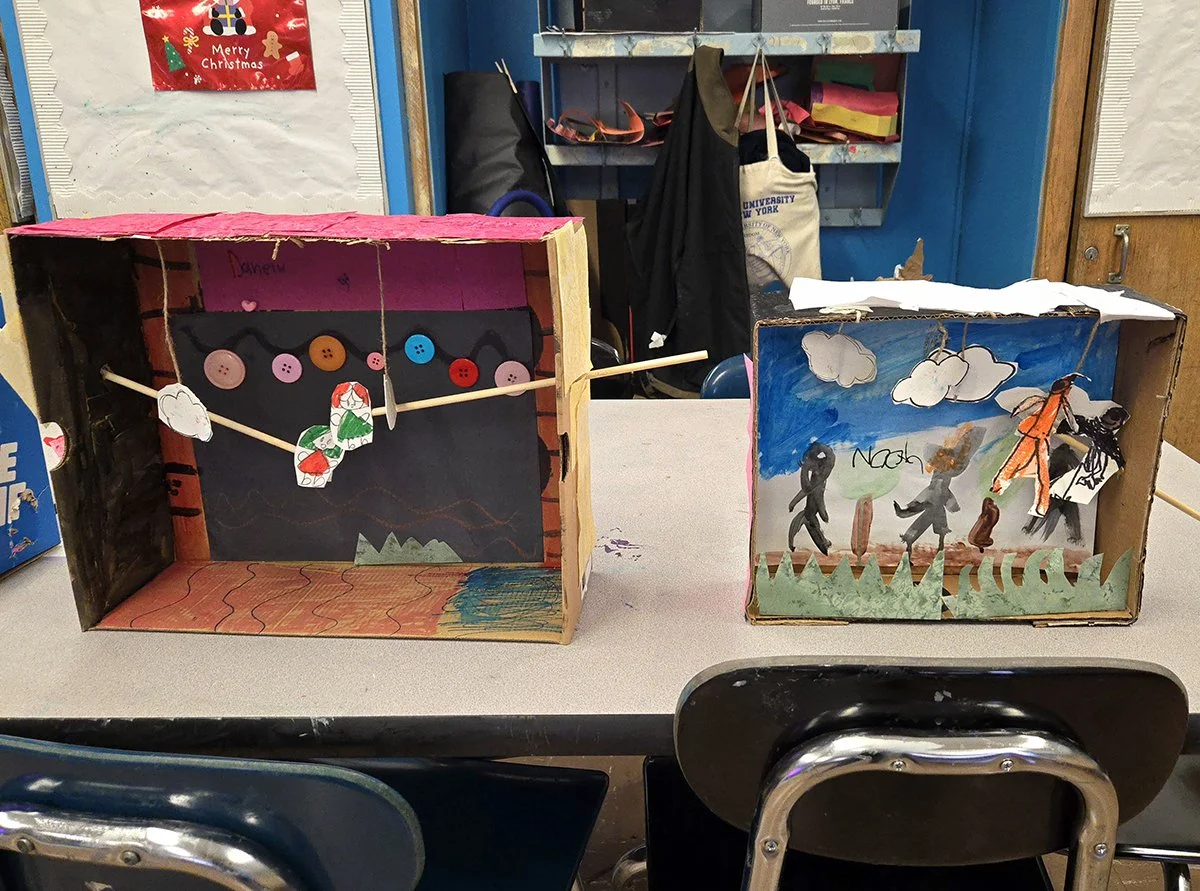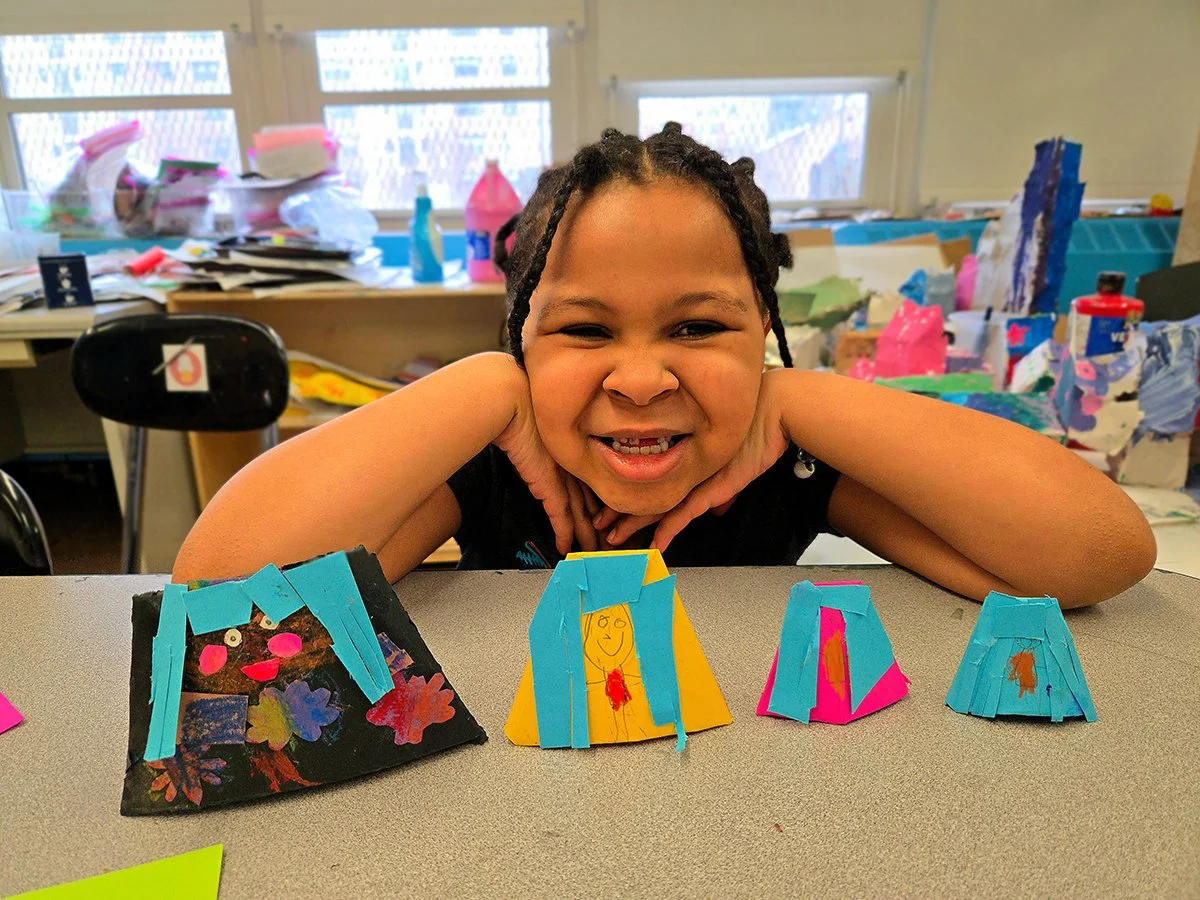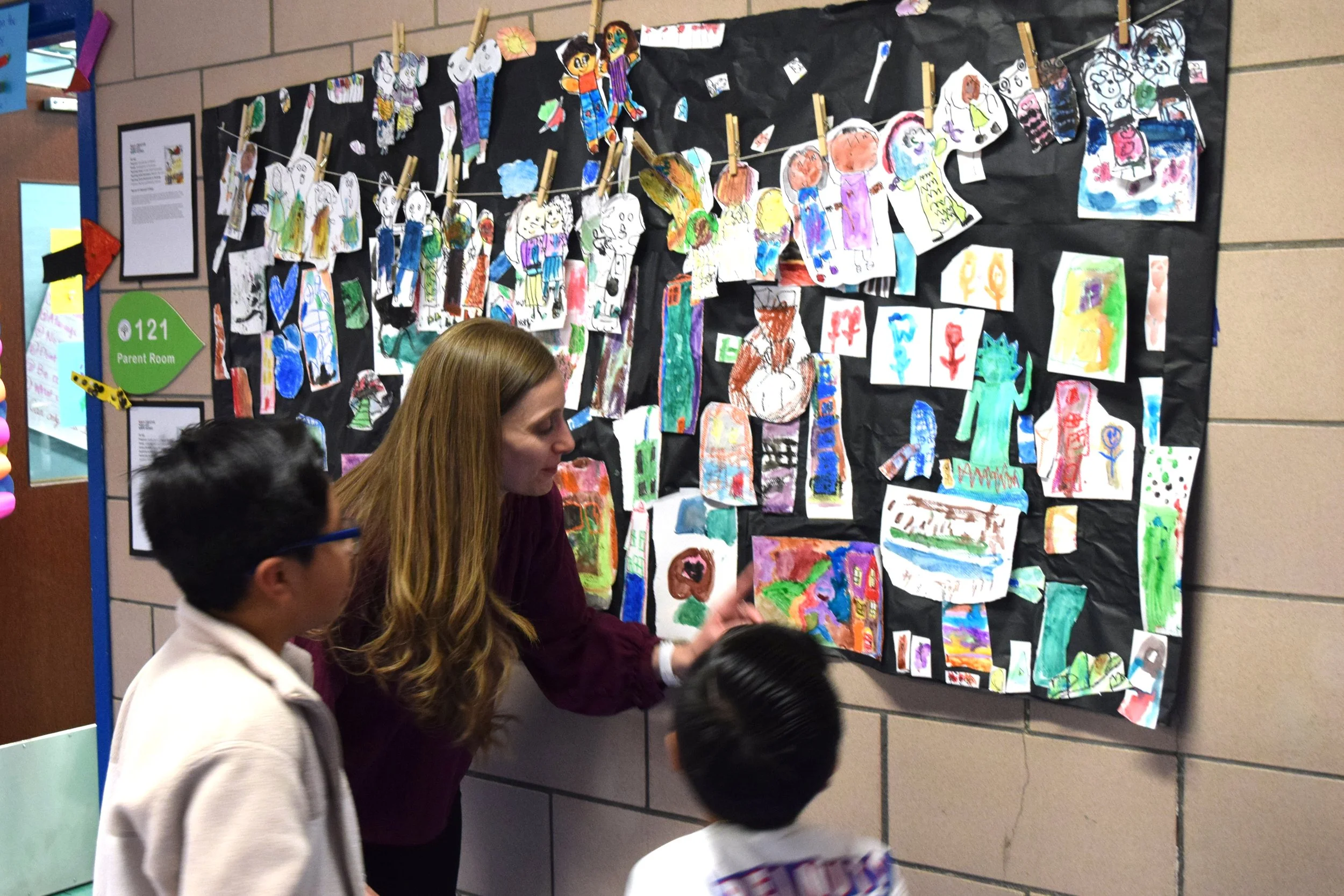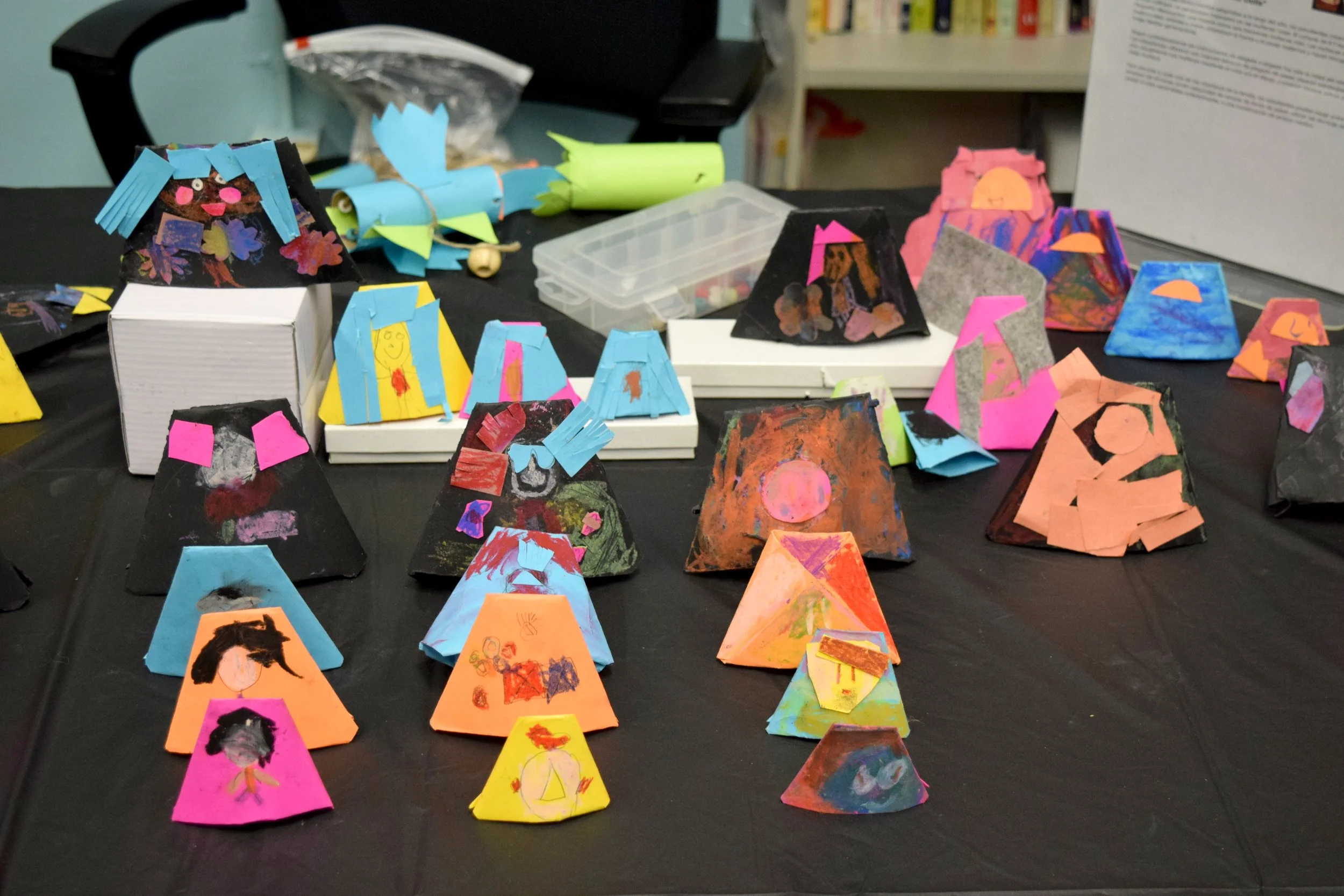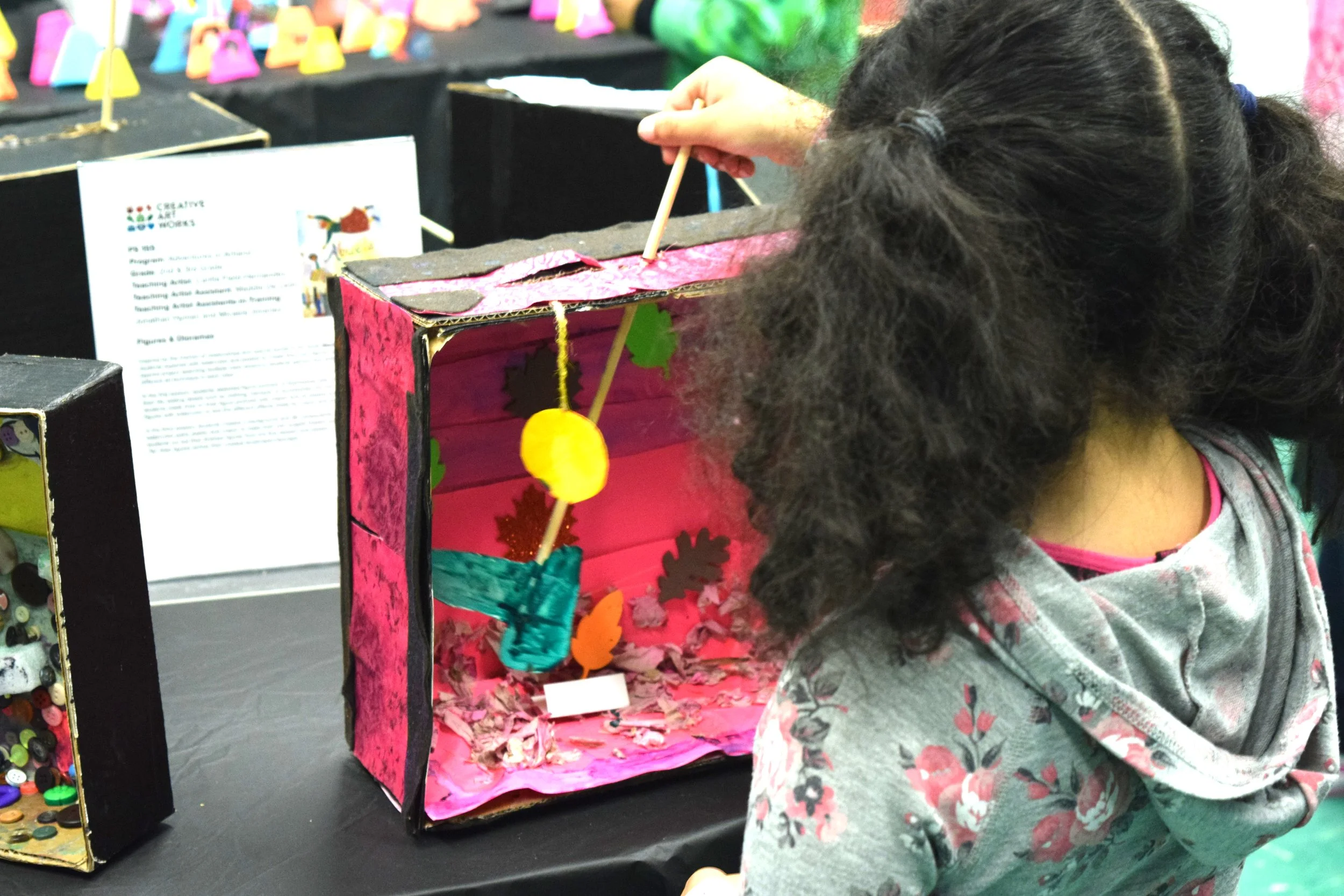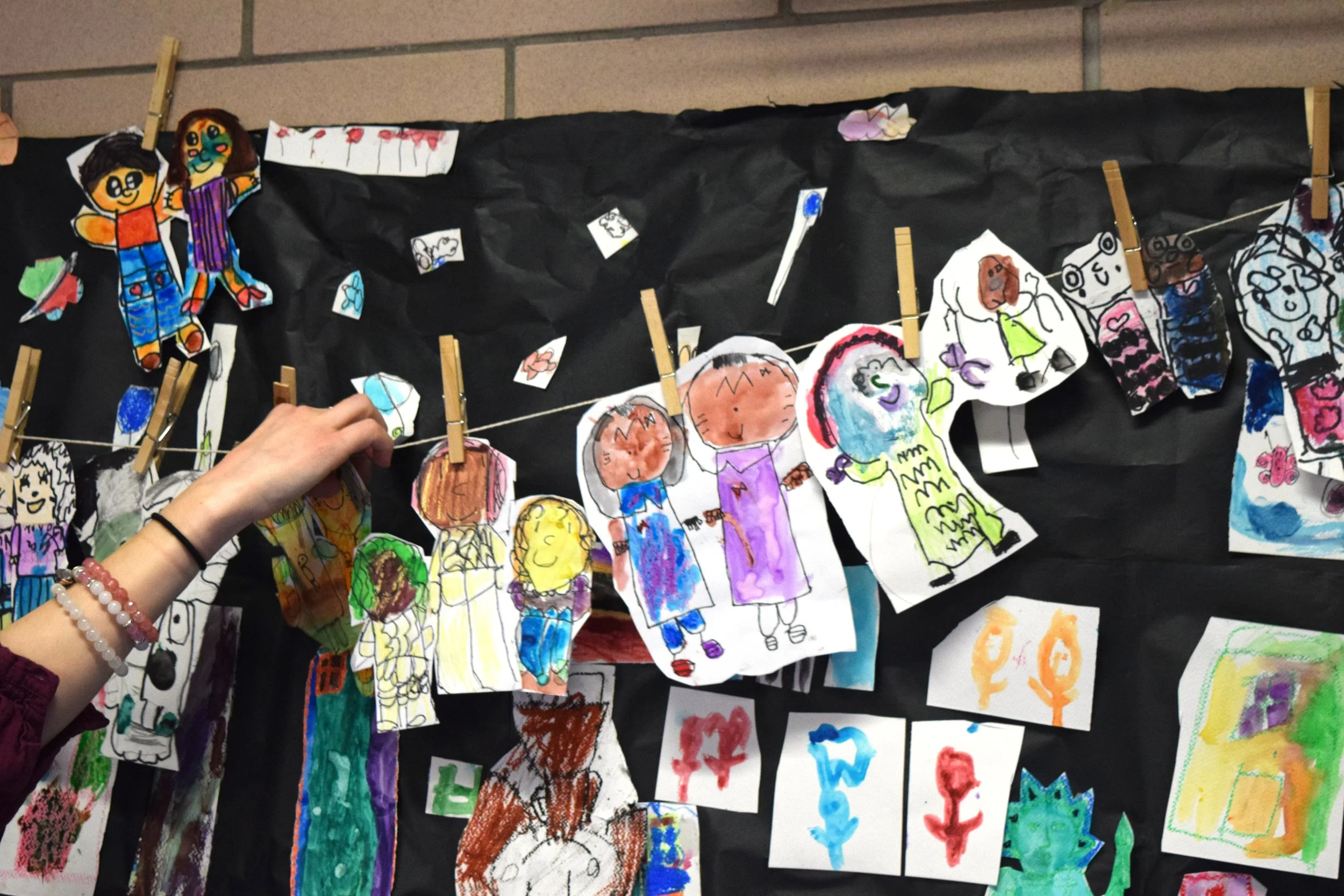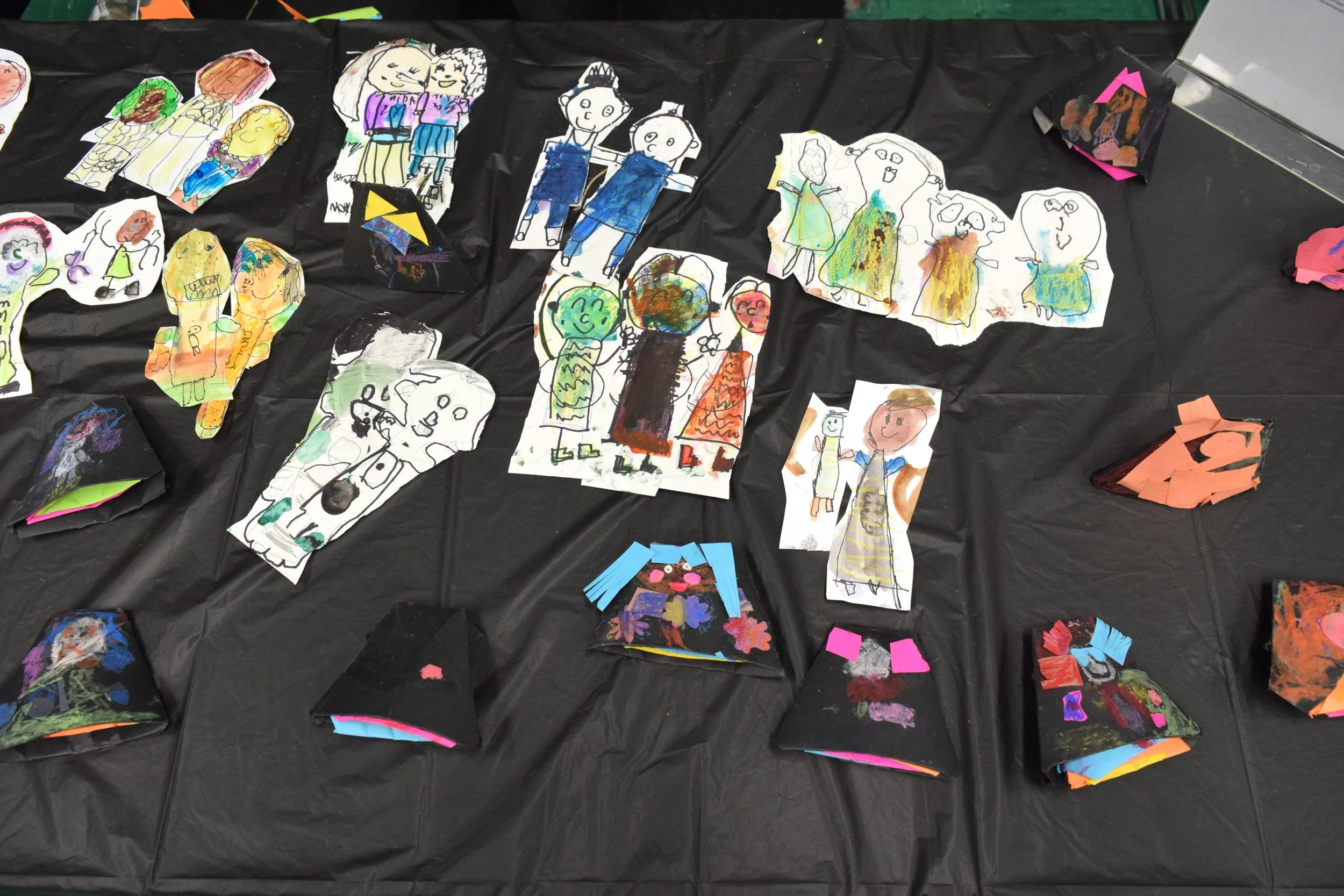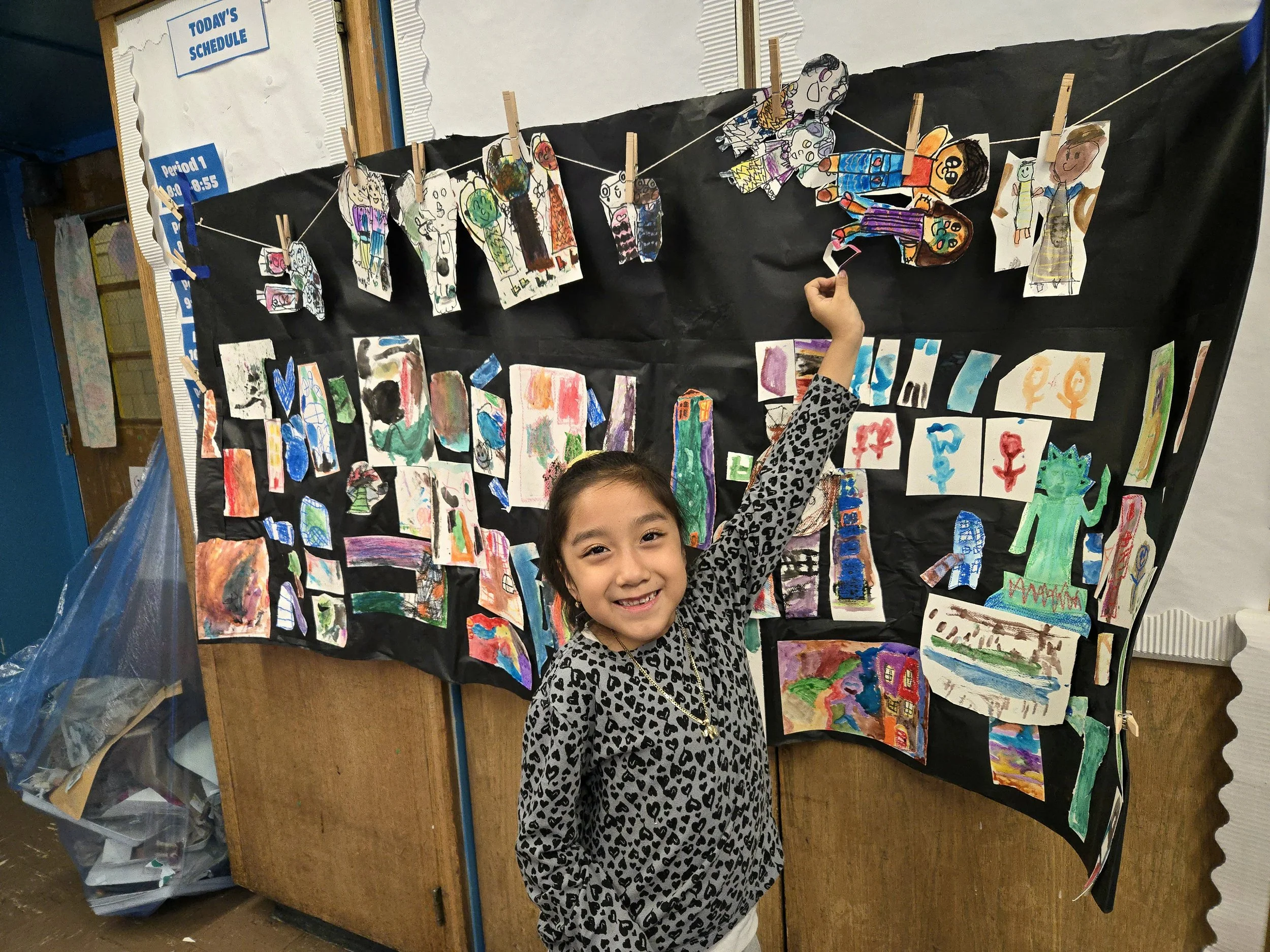Thinking Outside the Box
CAW Teaching Artist Carlita Field-Hernandez and two PS 155 students
Artmaking is all about problem-solving and discovering new ways to express ideas. CAW lesson plans are designed to present students with creative challenges that encourage them to come up with solutions that go beyond the original scope of the project. Some good examples of this can be seen at PS 155, The William Paca School, in East Harlem, where students have been taking on exciting artmaking projects that challenge them to think outside the box and explore creativity in unexpected ways. Whether designing intricate nesting dolls, exploring line work like Harold, the protagonist of Harold and the Purple Crayon, or constructing imaginative figures and dioramas, they tackled creative challenges by thinking outside the box.
Whether students are making dioramas, Russian dolls, or communal neighborhood maps (keep scrolling to see examples of those projects), artmaking isn’t just about the finished product—it’s about the process, the problem-solving, and the joy of making something truly unique. We can’t wait to see where their creativity takes them next!
“Reading stories with the students not only helps them get into the project, but also realize that art is everywhere—even in things they might not initially recognize as art.”
Figures & Dioramas
In CAW’s literacy-based artmaking program at PS 155, each project is a response to a work of of children’s literature. Inspired by the themes of relationships and special bonds in the book Abuela, by Arthur Dorros, students created their own figures and dioramas using watercolor, pastel, and crayon techniques. CAW Teaching Artist Carlita Field-Hernandez noticed that our students were fascinated by all the readings in this program and would continue talking about the correlating book throughout the process.
“I love incorporating the stories with the art projects,” said Carlita, “And both our K-1st and 2nd-3rd grade cohorts enjoy them as well.”
The project journey began with students sketching portraits of themselves alongside someone special in their life. Paying attention to details like clothing, hairstyles, and accessories, they captured what made their bond unique. Next, students explored mixed-media techniques by adding crayon and oil pastel details to their figures. With figures complete, it was time to build the settings for their stories. Using watercolor, pastel, and crayon, students painted backgrounds and constructed 3D elements out of paper, cardboard, and mixed media, transforming ordinary shoeboxes into interactive puppet theatres. Just like the floating adventurers in Abuela, students could now make their figures “fly” across their hand-painted landscapes with the help of bamboo sticks.
“I saw the pride in their faces when they would make connections between the mediums used in class with the illustrators in the books. It was one of the most rewarding parts of this program, second only to seeing how proud the students were of their work.”
“Genesis decided to make an imaginary pink ocean for her figures to fly over. She painted a paper towel with pink watercolor paint and then shredded it so that it would look like choppy ocean water. Then she painted a gorgeous pink and purple background. She really thought outside the box. ”
Dioramas inspired by Abuela
Our K-1 cohort embarked on a journey into the world of Russian nesting dolls, inspired by The Littlest Matryoshka by Corinne Demas. This tale of six sister dolls who become separated and must find their way back to each other introduced students to themes of family, perseverance, and identity.
Using paper-folding and gluing techniques they had been refining throughout the year, students created their own unique sets of matryoshka-inspired characters. The challenge? To design each doll as part of a visually unified family while still giving them individual personalities. Some students experimented with papercut floral patterns, while others applied oil pastel techniques learned from previous lessons. The results were stunning—a series of nested characters that showcased both thoughtful design and personal expression.
Nesting Dolls inspired by The Littlest Matryoshka
Harold and the Purple Crayon
Inspired by the classic book Harold and the Purple Crayon, by Crocket Johnson, students explored the power of line work as a storytelling tool. Their first task was deceptively simple: draw with their fingers in the air. As Carlita read from the book, she would ask students to draw in the air things that Harold draws: an apple tree, a dragon, and a hot-air balloon. This warm-up led to questions like: How many different sound-lines can you put in your art piece? Can you invent a brand-new type of line? With these playful prompts in mind, students created artwork experimenting with different types of lines—sometimes without even realizing they were also learning about negative space and composition!
Using the power of their imagination, students draw in the air as Carlita reads Harold and the Purple Crayon
Carlita says the stories she read to the students in class encouraged them to make connections between the techniques the illustrators used and the art they were in the process of creating.
“The students noticed the techniques the illustrators were using," says Carlita. “I saw the pride in their faces when they would make connections between the mediums used in class and in the books. It was one of the most rewarding parts of this program, second only to seeing how proud students were of their work.”
Student work from all four grades was displayed at a gallery walk at the end of the semester. This grand culminating event offered students an opportunity to reflect on all they had achieved over the course of the program and share it with family, friends, teachers, and staff from the PS 155 community.
The Gallery Walk
A PS 155 student proudly displays two characters she contributed to a communal map of New York City.
Teaching and Program Staff
Teaching Staff
CAW Teaching Artist Carlita Fieid-Hernandez
CAW Teaching Artist Assistant Madeline De León
CAW Teaching Artist Assistants-in-Training Jonathan Hyman and Micaela Jimenez
Program Staff
Program Manager Donna Manganello
Program Manager of Teaching & Learning Riki Sabel
Operations Coordinator Emilio Vides-Curnen
Program Coordinator Madeline De León
This Creative Art Works program is supported, in part, by the New York City Department of Cultural Affairs and the Cultural After-School Adventures (CASA) Initiative in partnership with the NYC Council and Council Member Diana Ayala. This Creative Art Works program is also made possible by the New York State Council on the Arts with the support of the Office of the Governor and the New York State Legislature. Creative Art Works’ school-based programs also receive support from the Cornelia T. Bailey Foundation.
